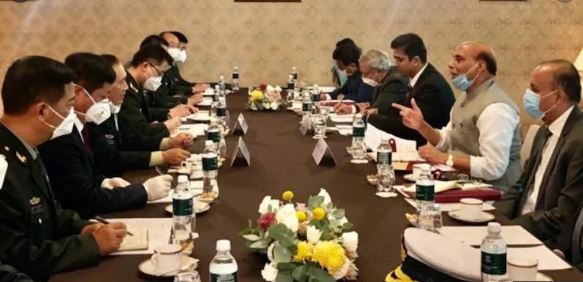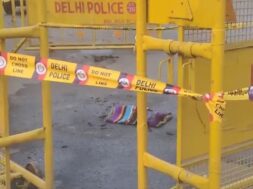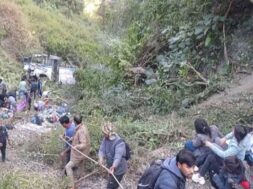
– Manas Dasgupta
NEW DELHI, Sept 5: The defence ministers’ level meeting between India and China in Moscow on Friday night, the first high level political engagement since the Galwan valley clash in May, seems to have failed to break the stalemate apparently prompting the United States president Donald Trump to once again offer his unsolicited intervention to settle the dispute between the two countries.
While the Indian side did not give any details of the outcome of the meeting between Rajnath Singh and his Chinese counterpart General Wei Fenghe on the sidelines of the on-going Shanghai Cooperation Organisation gathering in Moscow except to say that it lasted for more than 140 minutes, the Chinese official media said China had held India “fully responsible” for the current skirmishes on the borders, a stand repeatedly rejected by India in the past.
A concerned Trump, when asked about the Indo-China stalemate at a White House briefing last night, described the border situation to be “very nasty,” adding that the two countries were “going at it much more strongly than a lot of people even understand.” Again offering his services to break the stalemate, Trump said, “Washington was talking with both countries about what it could do to help defuse the situation.
We stand ready to help with respect to China and India. If we can do anything, we would love to get involved and help,” he added. Trump has offered to mediate between the two nuclear-armed nations in the past also. China has said there was no need for a third party to mediate and India had also appeared cool to the idea.
The first high-level political meeting in Moscow, since the bitter border standoff between the two sides along the Line of Actual Control (LAC) in eastern Ladakh, led by their respective defence ministers followed India accusing China of making a fresh attempt to change the status quo in the southern bank of Pangong Lake and said the Chinese side had engaged in “provocative military manoeuvres” in the late night of August 29 and 30.
When Singh had left for Moscow on Tuesday for the SCO meet, there were little prospects of the two defence ministers meeting on its sideline. The same day, India had again accused China of resorting to provocative action a day earlier when it attempted to change the status quo on the southern bank of the Pangong Tso Lake even as military-level talks were underway. “China’s actions this year have been in clear violation of agreements,” India said in a statement issued by the ministry of external affairs.
A day later, however, the Chinese side sought a meeting with Singh, the third attempt made by the Chinese defence ministry for talks with Singh after the Galwan valley standoff erupted in early May. This followed Singh delivering an indirect message to China at the SCO’s ministerial meeting. “Peace and security in the SCO region demand a climate of trust, non-aggression, respect for international rules and peaceful resolution of differences,” he had said.
Singh also spoke about the unilateral aggression between states and the need to refrain from it. “This year marks the 75th anniversary of the end of the Second World War as well as the formation of the United Nations which underpins a peaceful world, where international laws and sovereignty of states are respected and states refrain from unilateral aggression on another,” he said at the meet on Friday. After Singh’s address, the Chinese and Indian delegations held their first high-level political face-to-face meeting later in the evening.
According to official sources, in the meeting Singh pushed for the restoration of status quo ante at all friction points along the Line of Actual Control (LAC) in eastern Ladakh and called for disengagement of troops in an expeditious way.
But according to China’s official news agency, Xinhua, Wei Fenghe told Singh that the responsibility of the ongoing tension lies ”entirely with India” – an allegation New Delhi had brushed off repeatedly saying that the border aggression had actually been shown by the troops of the People’s Liberation Army (PLA).
Singh was also quoted by a Xinhua report from Moscow as saying that India hoped that two sides would “…adopt a responsible attitude, fully disengage front-line forces as soon as possible, avoid taking measures that may escalate or complicate the situation, and avoid turning differences into disputes so as to bring bilateral military relations back to the right track as soon as possible.” There was no comment forthcoming from the Indian side on the issue.
In Washington, Trump told media persons that the US was “ready to help resolve the dispute” between India and China over the mountain border running through the western Himalayas pointing out that both sides deployed additional forces along the frontier after a clash in June during which 20 Indian soldiers were killed in hand-to-hand fighting.
A senior White House official, however, said the US government assessment was that neither India nor China was “interested in pushing the dispute to the point that they would engage in war.”
















